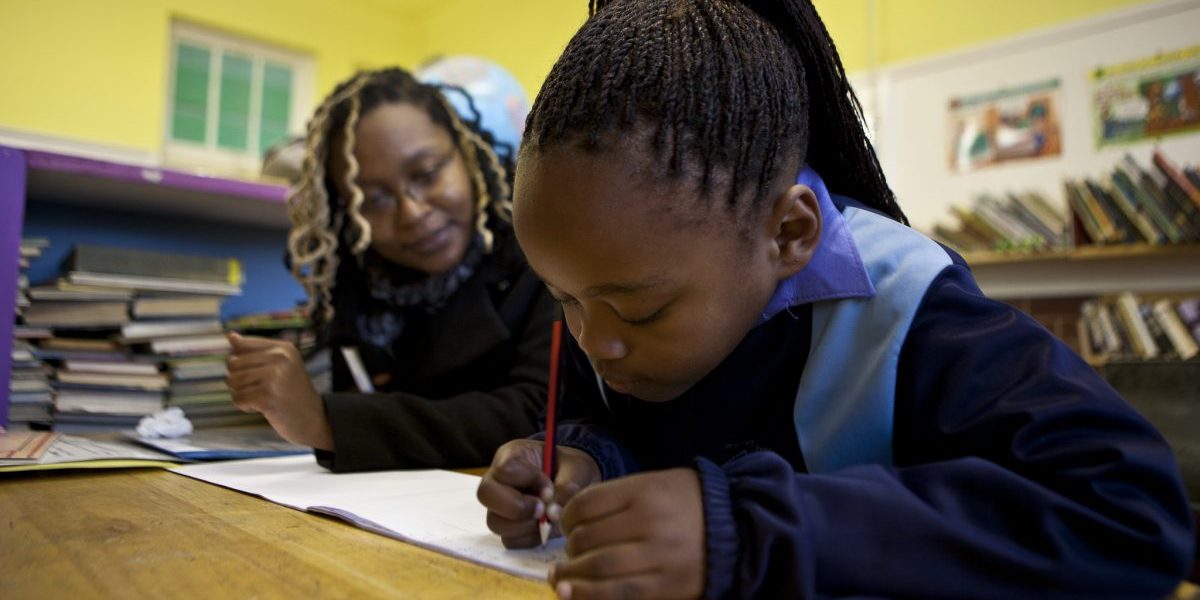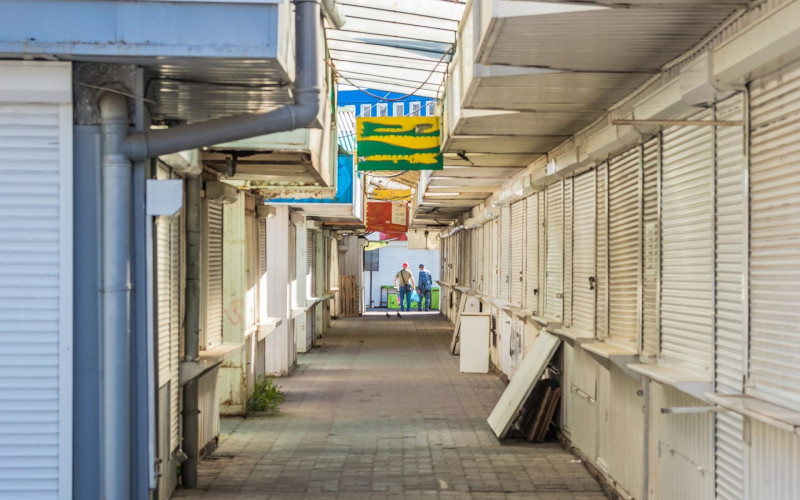Throughout Sub-Saharan Africa, fewer than half of primary-school age children go to school; enrolment in secondary school in 22 countries is below 20%; and less than 10% of the workforce has matriculated.
Please circle one of the following: These conditions ensure: a) present and future economic competitiveness; b) strong participatory democracy and nation building; c) an end to mass poverty; d) none of the above.
The answer is as obvious as the statistics are alarming. Education ought to lie at the core of Africa’s development strategies, the primary means by which the continent works to catch up with the rest of the world in terms of stability, prosperity and prowess. As Carol Bellamy, executive director of the UN Children’s Fund, notes, education may be the closest thing to a ‘silver bullet’ for the kind of acute developmental challenges affecting Africa’s children.
But it has not turned out that way. While the average child in South America can expect to attend more than 12 years of formal schooling, according to the UN Educational, Scientific, and Cultural Organisation (UNESCO), a typical child in Niger or Burkina Faso enjoys no more than four years in the classroom.
In the four decades since African countries started to gain their independence from foreign rule, their education systems – with few exceptions – have been marked by inadequate teaching, lack of resources like textbooks and chalkboards and colonial curricula and modes of instruction that often impeded the learning process.
Now, all African governments have pledged to meet the UN Millennium Development Goals, which include providing universal primary education by 2015. The idea is hard to argue with on paper. But there is growing evidence that such a narrow aim is having adverse consequences for broader education needs. And important questions about government commitment persist: While the global average annual state expenditure per child on primary education is $629, in Africa that figure is just $48. ‘The problem with policy is not generating it, it is implementation and management,’ says Keith Lewin, an education specialist at Sussex University in Britain.
For a continent with the lowest levels of global competitiveness, the stakes are evident. Across Sub-Saharan Africa, only South Africa and Seychelles spend more than 1% of GNP on science and technology research and development – and most economists consider even that too low to attract significant foreign investment or retain the most highly skilled Africans. According to studies by UNESCO, Sub-Saharan Africa has less than 0.5% of the global scientific community.
Or consider this: A World Bank study of 65 countries released in June 2004 at a conference on women and higher education found that a country’s GDP increases by 1% if the number of girls in school is doubled. Fertility and HIV/AIDS infection rates also decline. But in Sub-Saharan Africa, of the 42 million primary-aged children not in school, 62% are girls, according to the Forum for African Women Educationalists.
Neither the problem nor the outlook has changed significantly since 1999, when the British relief organisation Oxfam first published this conclusion in a study on education in Africa: ‘Governments have failed to develop a coherent plan of action for mobilising the political will, popular involvement and financial resources needed to deliver on the promise of education for all. If the current inertia is not overcome … the costs of such a failure for Sub-Saharan Africa in terms of lost opportunities for poverty reduction and economic growth would be immense. It would signal the end of any realistic chance of the region achieving the human development targets set by the international community by 2015.’
Literacy rates for Sub-Saharan Africa, meanwhile, averaged 62% in 2001 compared with 89% in Latin America. While many countries claim to offer universal primary education, definitions vary widely. Some offer only two or three hours of instruction per day. Others, such as South Africa, offer six. The proportion of Africans living on less than $1 a day, meanwhile, now exceeds 60%.
The Millennium Development Goals, which include benchmarks for providing health care, sanitation and clean water and universal primary education, were meant to jolt listless governments and aid agencies into making tangible progress after years of stagnation.
But in key respects, evidence is starting to indicate the MDGs have backfired by stifling a broader debate on education in Africa. Where schools once coped with one teacher for 50 students, many have more than 100 students per teacher. Hit by HIV/AIDS and already inadequate teacher training colleges, many African countries – Tanzania, for instance – have made teachers out of high school graduates, often using those not good enough to move on to university. In Uganda, 17% of teachers have not been trained at all and 57% need to upgrade their qualifications.
The result? The quality of teaching has plummeted in many countries that have embraced universal primary education – the opposite of the intended effect. More damaging, the demands of such a provision have drawn funding and attention away from other crucial components of public education. In Malawi, for example, which committed itself in 1995 to providing universal primary education, 60% of the education spending goes to primary education, 30% to tertiary and only 10% to secondary.
The MDGs have opened a debate about government performance in meeting the needs of citizens, but all the evidence shows that governments need to take dramatic action to improve many aspects of education beyond the primary level. Despite the significant social benefits of increasing the number of primary-age children attending school, argues Jacob Bregman, a leading educationalist at the World Bank, secondary education is vital to development and economic growth.
Asia provides important lessons. Four decades ago, countries like Singapore, South Korea and Malaysia were as poor as Ghana at its independence. Africa largely defined its problems in monetary terms, and since the 1960s has received more than $1 trillion in aid and loans. Asia looked in a different direction, concentrating on improving education in their formal school systems and helping business acquire technologies to make them more competitive.
Today Asia thrives while Africa continues to lag far behind.
Africa is increasingly marginalised in the world. Critically, the value of what Africa produces is steadily declining. To improve its economic posture, the continent needs a comprehensive solution to its education crisis, says Mamadou Ndoye, the executive secretary of the Association for Development of Education in Africa. ‘When creating an education system, you need to look at what African societies are today and what we want them to be tomorrow,’ he says.
Based on conversations with a range of education specialists across the continent and farther afield, here are 10 neglected areas affecting education that African governments must address in order to create a more prosperous future:
1. HIV/AIDS
The epidemic is forcing a rapidly rising number of children to abandon school to care for ailing parents, orphaned younger siblings and family farms. A dangerous cycle is setting in: AIDS is decreasing the opportunity for children to become educated, and less education deepens poverty, which in turn increases the vulnerability to infection, according to a report by the Global Campaign for Education.
Zimbabwe and Zambia, which once had close to universal enrolment, are experiencing sharp declines in learner participation as household incomes plummet and children take on increased domestic responsibilities due to the epidemic. AIDS-related infertility, a declining birth rate and rising infection rates among children also lower enrolment rates, the report found.
Studies by UNAIDS in 17 African countries show that receiving at least a primary school education can halve the risk of young people contracting HIV, even if they are never exposed to specific AIDS-related education programmes. The more girls are educated, the longer they are likely to refrain from sexual activity and the more likely they are to require their partners to use condoms.
‘Education,’ observed South Africa’s former education minister Kader Asmal, ‘is the only anti-HIV vaccine that there is.’
HIV/AIDS, therefore, must be at the core of education policy for both teachers and learners. The continent has an estimated 12.4 million AIDS orphans, and that figure is projected to rise rapidly. Enabling those children to acquire an education requires a range of state interventions, including school-feeding schemes, removal of fees and the provision of financial incentives for parents to send their children, especially girls, to school. In Brazil and Nicaragua, for example, enrolment and completion rates increased measurably when governments gave money to poor families who sent their children to school.
The epidemic is also decreasing Africa’s already inadequate supply of teachers. An estimated 19% of male teachers and 29% of female teachers in Zimbabwe are HIV-positive. In Zambia, research funded by the Department for International Development (DFID), the foreign development office of the British government, found the number of deaths among primary school teachers rose from two per day in 1996 to four per day in 1998. This is equivalent to the loss of two-thirds of the country’s cadre of newly trained teachers per year.
To curb and manage HIV rates among teachers, studies show, African governments should provide for more HIV testing as well as medical support including anti-retroviral drugs for those who are infected; regular prevention programmes; and work-based counselling and support groups. Increased funding for teacher colleges is also necessary.
2. Teacher quality and quantity
The provision of free public primary education has greatly increased the number of students and, therefore, demand for teachers, which has compounded a longstanding problem: Africa needs to radically improve the quality of its teachers.
‘Almost everywhere,’ says Adriaan Verspoor, an education researcher at the World Bank, ‘large numbers of teachers have been recruited without professional training, lacking the skills necessary for good quality instruction.’
Studies by the World Bank estimate that Africa has about 2.5 million teachers and will need an additional 1.36 million teachers to meet the goal of universal primary education by 2015. That translates into a 3% increase in teachers every year for the next decade.
The problem must be tackled at four levels. First, the output of new teachers must be increased. That means more teacher colleges or more places in existing colleges. Second, the quality of instruction at teacher colleges must be improved. Adding more teachers will not solve the problem if they are not adequately qualified. Third, countries must take a disciplined approach to retiring under- or unqualified teachers and replacing them with new teaching graduates. Fourth, governments must work to improve teachers through in-service training. If teaching workshops are not feasible, school principals and senior teachers should monitor teachers in their classrooms and offer constructive advice on teaching technique. Studies by the Association for the Development of Education in Africa (ADEA) stress the importance of school-based support for educators and the lead role of head teachers in changing the way teachers teach. To be effective in their work, teachers need the support of principals, the broader education system, parents and communities, Verspoor argues. But this requires education ministries to empower local school managers and demand performance from them.
Martial Dembélé, associate director of the Centre for International Development in Education, says continuing professional development for teachers in Sub-Saharan Africa is successful when it is ‘a team rather than an individual effort; focuses on what teachers feel they need, with priority given to the teaching of basic subjects; is linked with student learning; and is conducted in or close to the classrooms of participating teachers’ with extensive practice, outside experience and sufficient material support.
3. Measuring results
Improving quality requires evaluating outcomes. That is a basic tenet of modern management too often neglected in African education.
Three research programmes attempt to measure academic achievement on a regional basis: SACMEQ (Southern Africa), PASEC (Francophone Africa) and MLA (Sub-Saharan Africa). Initiated in 1992, these studies conclude that about half of the pupils in Africa have not achieved the minimum skill level defined independently by the authorities in each country.
Another study conducted by ADEA last year examined the extent to which students met the skills goals necessary to complete primary school successfully. Using the schools’ own definition of success, the study found that at the end of primary learning less than a third of children have acquired the knowledge and skills necessary to perform at the secondary level.
According to Khadim Sylla, an education expert at the International Institute for Educational Planning at UNESCO, these studies confirm ‘the general observation of the low level of educational quality in Africa’ and should become a routine part of educational stocktaking on the continent, together with more qualitative assessments.
To make consistent progress, education ministries need to build into their budgets funds and staff to test and evaluate students and teachers. Zambia is a good example of what can happen when this is done. At independence, the country decided to teach all students in English. But in 1995, after three decades, the country finally began testing and found that three-quarters of students were functionally illiterate after seven years of schooling. Officials heard of successful approaches that taught students to read first in their mother tongue and then made a transition to English after three years. A trial programme found that mother-tongue instruction dramatically improved literacy.
4. Incentives for maths and science
Africa ‘cannot begin to be fully integrated into the global economy,’ said South African President Thabo Mbeki ‘if we do not develop the necessary skills to participate in the increasingly knowledge-based communication society.’ He argued that a growing number of South Africans were ‘unemployable’ in a modern economy.
To be globally competitive, Africa needs more graduates trained in maths, science and information and communication technology. To increase at least the potential of creating more future scientists and engineers, primary and secondary teachers need to make learning in these subjects interesting, relevant and fun.
At the university level, many students avoid technical fields – despite the job opportunities they offer – because they have had a poor foundation in math and science in primary and secondary school. To address this shortcoming, universities should offer reduced tuition or bursaries in needed technical fields and tutoring centres to support students willing to pursue such studies.
South Africa’s University of Pretoria, for example, fully sponsors 140 black students in mathematics and the sciences every year. To help alleviate the high drop-out rate among ill-prepared first year students, the university offers a ‘foundation year programme’ that gives intensive, practical instruction in chemistry, physics, biology, mathematics, computer literacy, English and study skills. In East Africa, the Carnegie Corporation recently provided $4 million to Makerere University and the University of Dar es Salaam to boost enrolment of women undergraduates especially in science and technology.
5. Corruption
African politicians sometimes excuse corruption as a minor problem no worse in Africa than other regions of the world, but it is a direct threat to development – which is more critical on this continent than elsewhere – because it robs social sectors of available funds. In Kenya for example, principals have been accused of bribery, favouritism and stealing directly from schools. In an editorial to Kenya’s nearly 4,000 principals in June, the editors of the East African Standard lashed out at the ‘petty corruption that permeates day-to-day transactions in schools.’ Irregular admissions, private coaching during class time, collusion, impersonation and other forms of cheating during national exams are commonplace, the editors noted.
To address corruption in education, departments, principals and school governing bodies need to adopt a zero tolerance approach to corrupt practices. Political leaders also need to send a strong message that corruption at all levels of government is inadmissible.
6. Skills training and non-formal education
Nepad’s 2004 draft document on education states that Africa’s further education institutions are producing in-adequate numbers of skilled personnel – inferior skills relative to the quality required and skills that do not match the needs of the job market.
Education in a successful economy must, therefore, occur in many forms. Governments must take action to encourage vocational training, offering incentives for companies and parastatals to train staff through formal courses and apprenticeships. They must fund literacy and skills training aimed at adults and change regulations and incentives to improve the quality of the flourishing for-profit education sector. This also means governments and businesses ought to collaborate to identify skills shortages in the market and design programmes and incentives to address them.
7. Strengthening secondary education
Although primary education provides a foundation, secondary education is where students acquire the skills needed to win jobs and thus deliver real benefits to national economies. ‘Even good primary schooling is no recipe for Africa’s success,’ notes Lewin, the education researcher at Sussex. ‘The obvious strategy, if countries want value for money, is to invest in secondary education.’
According to the World Bank, only about 25% of African primary school pupils make it to high school and just 10% of secondary school students eventually graduate. This reflects a severe shortage of schools and teachers at secondary level.
Uganda is typical of countries that have embraced universal primary education. Although the programme has been running for seven years, less than half of the 700,000 primary school graduates last year could be accommodated at secondary school, according to official figures.
Continentally, the emphasis on universal primary education has contributed to a funding crisis at secondary level. Lewin argues that most education budgets in sub-Saharan Africa favour primary and tertiary education, with secondary receiving the smallest slice of the pie: Some governments allocate as little as 10% toward this sector, he found.
However much more expensive secondary education may be than primary education, Africa will continue to undermine its global economic competitiveness as long as it fails to prepare students adequately for tertiary academic work.
8. Curriculum reform
Schools have to do more than teach reading, writing and arithmetic. Pupils need to become independent and critical thinkers. But in many countries the curricula are unchanged from the colonial era. Students learn by rote and have little opportunity to ask questions.
As a study by ADEA states: ‘One of the criticisms levelled against African schools is that pupils do not learn how to learn, nor how to be problem solvers or take initiatives. These strategies should be taught in schools.’
This is particularly vital at secondary level. World Bank education specialist Jacob Bregman says that the ‘role and goal of secondary education needs to change: from the current out-of date and highly inefficient exclusively academic [university] preparation, to a self-standing and world-of-work preparatory cycle.’
At a recent conference on secondary education held in Dakar, Senegal, a broad consensus emerged that students at the secondary level should learn skills needed to drive the economy. More vocational and technical schools, driven by the needs of the private sector, are required. Business should be more involved in such schools and drive their curricula, delegates to the conference argued, so that what is taught is up-to-date, relevant and meets the demands of industry.
Curriculum reform can only work if educators have been trained in the new subjects, are qualified to implement new methods and have adequate materials and lesson plans. HIV/AIDS education is an example. Countries have added it to curricula, but it has yet to show results in reducing infection rates or changing perceptions. Research by the DFID found that HIV/AIDS education made little impact in Botswana, Malawi and Uganda because too few teachers had either the training or commitment to integrate the topic into the mainstream curriculum.
9. Teacher salaries
Africa has a shortage of teachers that is set to increase as primary and secondary schooling expands. But countries are failing to attract the brightest graduates into the profession because the teaching fraternity is one of the lowest paid professions on the continent.
Teacher salaries differ greatly. A starting salary in Malawi, for example, can range from $27 and $127 a month and in Tanzania from $70 and $97, depending on qualifications.
‘It is widely acknowledged that African teachers are poorly paid and sometimes don’t even get paid for months,’ said John Lewis of the South African Democratic Teachers’ Union. ‘The profession does not pay and has also lost its status in many countries, and it is no surprise that graduates then opt to pursue other careers where they can make more money.’
In Botswana, one of the richer African countries, teacher salaries have declined in real terms between 1970 and 2000, said Lisenda Lisenda of the Botswana Institute of Development Policy Analysis. Three decades ago, her research showed, a senior civil servant earned on average five times more than a teacher. Now, civil servants earn on average 13 times more than teachers.
10. Educating girls
Despite government efforts to address gender imbalances in education, significantly fewer girls attend school than boys. Across Africa, 60% of children not in school are girls, according to the UN Children’s Fund. The problem hinders economic growth and exacerbates health and poverty problems, according to a growing body of evidence.
Boosting female enrolment reduces child and maternal mortality, family incomes and overall economic growth. Girls without education are more at risk from HIV/Aids, sexual exploitation and trafficking. A new study by the US Council on Foreign Relations found that ‘a single year of primary education correlates with a 10-20% increase in women’s wages later in life. Academic studies find the return on a year of secondary education is even higher – in the 15-25% range; an extra year of a woman’s education has been shown to reduce the risk that her children will die in infancy by 5% to 10%.’
Nepad and African governments have committed to the Millennium Development Goals and are racing to expand universal primary education in time for the 2015 deadline. But most countries have neglected the immediate UN target of balancing the number of girls and boys in school by 2005. In 2002, only 63% of African school-age girls attended primary school and 28% attended secondary school, according to the UNESCO.
Research by Christopher Colclough of UNESCO in nine sub-Saharan states on girl’s education showed that ‘governments realised girls education is important, but their policies to tackle it are usually inadequate.’ Countries are also failing to translate commitment into budgetary allocations. A report by the Global Campaign for Education concludes that the female enrolment rate in sub-Saharan Africa for Grade 1 in 2005 would have to be doubled if the region expected to attain universal primary education by 2015. Grade 1 intakes in Ethiopia and Mali need to increase by 60%, in Togo by 62% and in Niger by 63%. In French speaking countries, where gender imbalances are more acute, enrolments should rise by 200%, the report said.
To see the real health and empowerment benefits of education, girls need to progress beyond primary school. Programmes to waive fees, reduce the hidden costs of clothing and textbooks and feed children at school have proven successful in boosting the enrolment of girls.







